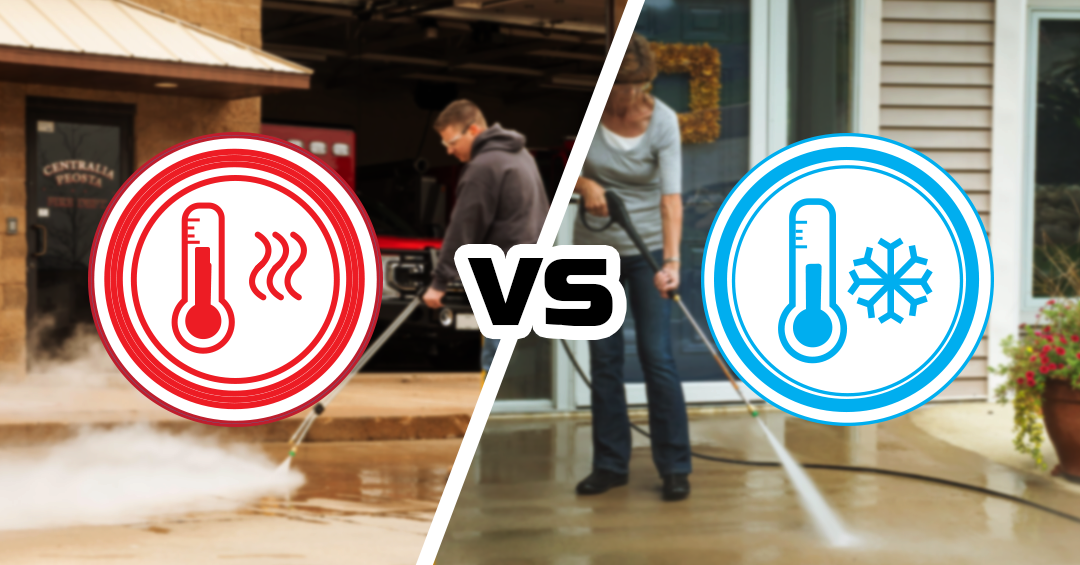When managing cleaning across transport, farming, or construction sectors in New Zealand, selecting the right pressure-washing system is essential. At PSL Blasters, both the hot and cold water blasters are supplied and serviced to match your operation. The key differences between hot and cold water blasters and practical guidance on choosing the right system for your fleet or facility are explained.
What’s the difference?
At its simplest, a cold-water blaster uses high pressure with ambient (or only mildly warmed) water; a hot water blaster raises the water temperature so the heat + pressure combination more effectively breaks down grease, oils, and organic residues. In practice, hot water systems deliver a deeper clean with less mechanical scrubbing, which speeds up operations and reduces labour.
Cold water blasters
Cold water blasters rely on mechanical force—high pressure (measured in PSI or bar) combined with water flow (litres per minute)—to remove dirt, grime, and debris. They are well-suited for general cleaning tasks where stubborn organic or oil-based contaminants are not the main concern.
Common applications in New Zealand:
- Cleaning driveways, footpaths, and building exteriors
- Washing down plant, machinery, and equipment where grease buildup is minimal
- General fleet washing when heavy soiling is not present
- Agricultural sheds, fences, and infrastructure maintenance
Cold water blasters are generally simpler in design, more affordable upfront, and easier to maintain. They remain the go-to choice for everyday cleaning across many industries.
Hot water blasters
Hot water blasters include a heating system (typically diesel or gas-fired) that raises the water temperature to between 60°C and 90°C+. The combination of heat and pressure significantly increases cleaning efficiency, especially when dealing with oils, greases, fats, and organic contaminants.
Benefits of hot water:
- Faster cleaning: Heat breaks down substances that cold water cannot, reducing the need for repeated passes or manual scrubbing.
- Improved hygiene: Higher temperatures kill bacteria and sanitise surfaces—critical in food processing, healthcare, and agricultural environments.
- Reduced chemical use: Hot water often eliminates or reduces the need for harsh detergents and solvents, lowering chemical costs and environmental impact.
- Better results on heavy soiling: For grease-laden trucks, oily machinery, or fat-contaminated processing areas, hot water is unmatched.
Typical applications:
- Commercial fleet washing (trucks, vans, trailers, machinery)
- Food processing plants and dairy sheds
- Kitchens, hospitality venues, and catering equipment
- Construction and earthmoving equipment with heavy oil and grease buildup
- Pre-COF (Certificate of Fitness) vehicle cleaning
Which system is right for you?
Your choice depends on what you’re cleaning, how often, and your operational priorities.
Choose a cold water blaster if:
- You’re primarily cleaning non-greasy surfaces (concrete, buildings, general equipment)
- Your operations do not require sanitisation or deep degreasing
- Budget and simplicity are priorities
- You need a portable, low-maintenance solution for light to medium-duty use
Choose a hot water blaster if:
- You regularly deal with grease, oils, fats, or organic residues
- Cleaning speed and labour efficiency are important
- Hygiene and sanitisation are regulatory or operational requirements
- You manage commercial fleet washing, food processing, or heavy industrial cleaning
- You want to reduce chemical detergent use
PSL Blasters: expert advice and servicing
At PSL Blasters, we supply, service, and custom-build both hot and cold water blasting systems to suit New Zealand conditions. Whether you’re upgrading a single machine or outfitting an entire wash bay, our Hamilton-based team provides expert advice,
